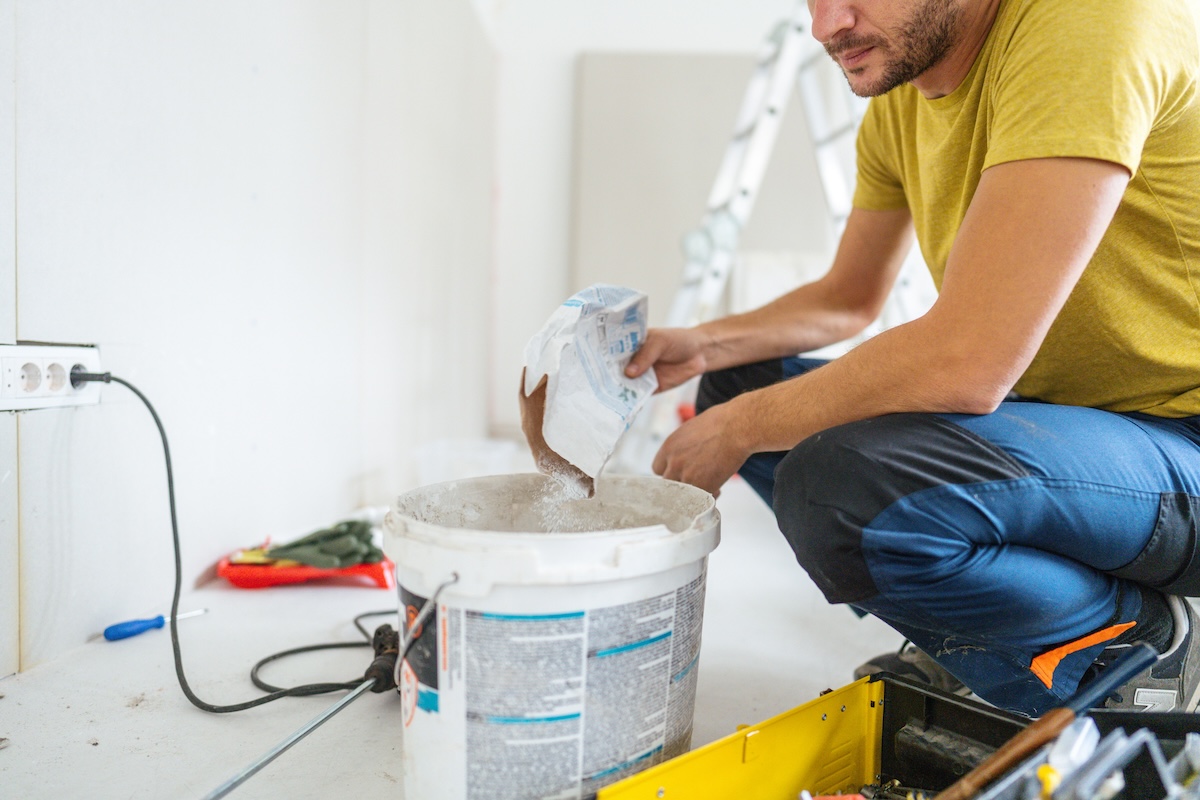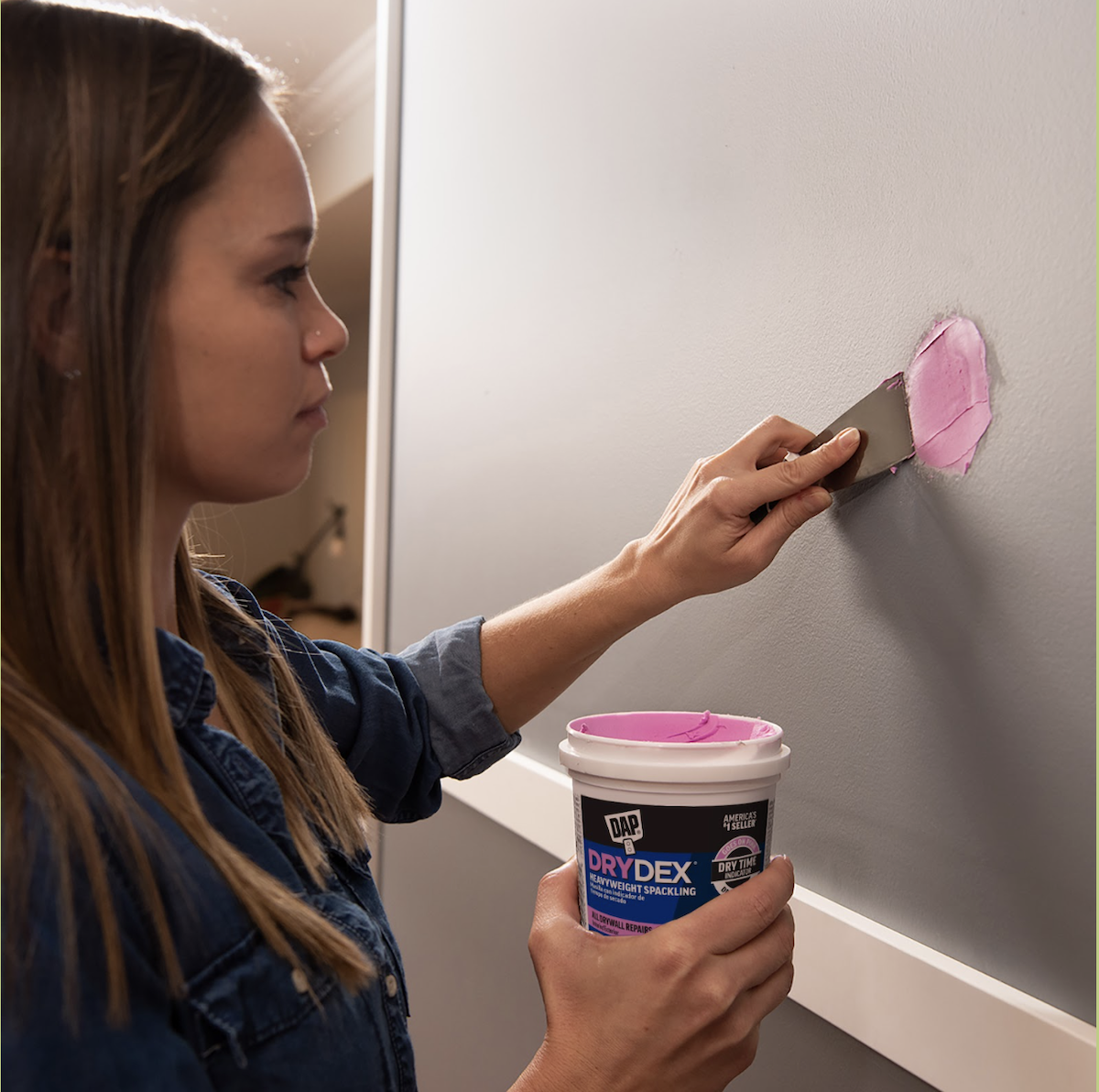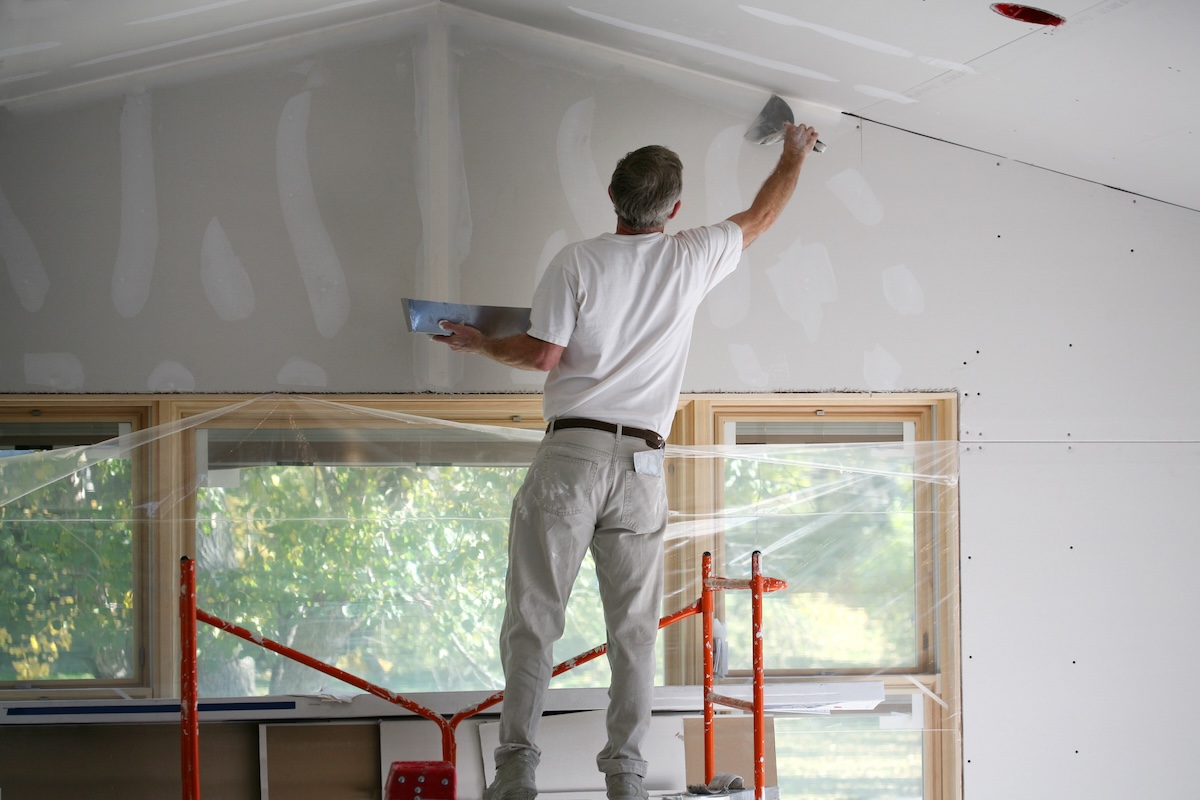We may earn revenue from the products available on this page and participate in affiliate programs. Learn More ›
Half of the battle with common home repairs is often picking the correct material to use. And when two products seem to have some overlap in their intended purpose—as spackle and joint compound do—the choice can get even trickier.
Is joint compound the same as spackle? Even though they look almost identical to the untrained eye and both are used in wall and ceiling repair and construction, they aren’t the same. The differences affect factors like dry time, shrinkage, and project scope. Generally, spackle is best for small repairs and joint compound is used for larger drywall projects. Still, there are plenty of different products in both categories, making it tough for new DIYers to choose the right one.
If you’re about to tackle drywall installation or repair, read on to learn more about joint compound vs. spackle so that you are ready to handle that next project like a pro.
What is joint compound?

Joint compound (also known as “drywall mud,” “Sheetrock mud,” or simply “mud”) is comprised mainly of gypsum dust and can be bought in bags of ready-to-mix powders or in pre-mixed tubs. There are also quick-set joint compound options that can speed up the typical 24-hour wait to just under an hour.
Types of joint compound
The most popular types of drywall mud include all-purpose, quick-setting, taping, and topping.
- All-purpose joint compounds, like the USG Sheetrock all-purpose joint compound, are designed for easy application to drywall seams.
- A quick-setting joint compound is better suited to wall and ceiling patching jobs because it dries more quickly. ProForm Quick Set Lite, for example, dries in just 45 minutes.
- Taping joint compounds are the easiest to apply, have the lowest amount of shrinkage, and are used over drywall tape to smooth out the seams between drywall sheets.
- Topping joint compounds are designed for the top coat of drywall seams, and they are designed to be smooth and free of air bubbles.
What is spackle?

Spackle, made of gypsum powder and binders, has a gooey paste-like consistency and is sold pre-mixed in tubs. When making minor repairs to plaster or Sheetrock gaps that are less than ¼-inch deep or wide, spackle is a good option because it’s used to fill small dings and dents, like nail holes, in walls.
Spackle dries more quickly and with less shrinkage than joint compound, and that fast dry time (usually about 30 minutes) means you can sand and paint over the filled flaws almost right away.
Types of spackle
Spackle varieties are elastic, minimizing shrinkage. Types include:
- Lightweight spackle like DAP vinyl spackling is made with a vinyl binding agent and is suitable for small repairs that are less than ¼ inch wide or deep.
- All-purpose formulations, such as DryDex heavyweight spackle are made with acrylic like and can handle holes up to ¾ inch in diameter.
- Large-hole repair spackle products like the 3M High Strength Large Hole Repair Kit are made to fix holes up to 3 inches wide. These kits usually come with a small piece of mesh to provide a backer to which the spackle can adhere.
Key Differences Between Joint Compound and Spackle
One distinctive difference between spackle and joint compound is the latter’s frosting-like consistency, whereas spackle is usually lighter. Here are a few more key differences.
| Joint Compound | Spackle | |
| For patching small holes up to ¼ inch | ✓ | |
| For the quickest-drying results | ✓ | |
| For covering drywall seams with drywall tape | ✓ | |
| Should be sanded before painting over | ✓ | ✓ |
Joint compound can be substituted for spackle if need be, but not vice versa.
Got a tub of joint compound left over from a previous renovation? Feel free to substitute drywall mud for spackle for small drywall repairs. Just be aware that joint compound runs the risk of shrinking, which calls for multiple coats and a longer dry time—sometimes up to 24 hours.
On the other hand, if you’re all out of joint compound but have what looks like enough spackle to patch a large hole or finish your drywall installation, hold off. You’re better off going back to the hardware store for more drywall mud instead. Spackle (especially the lightweight variety) dries too quickly for the kind of coverage needed to make big repairs or install drywall, jobs that definitely call for joint compound.
Both products can dry out quickly during use as they’re exposed to air.
Even though there are differences between drywall compound vs spackle, they both react to air the same way. It’s important to work quickly with both joint compound and spackle, and you should keep either product covered when not in use. If you’re mixing up your own DIY spackle or joint compound with water and a powder mix, only make as much needed for the task at hand.
Joint compound is most often used when hanging new drywall.

During drywall installation, contractors affix large sheets of gypsum sheet to awall’s framing, apply drywall tape to the seams between the sheets, and then cover the tape with joint compound. With a little bit of finish work, the joint compound helps create a smooth surface with undetectable seams. Spackle isn’t suited for this purpose because its quick-drying nature gives you less flexibility and working time, which makes determining whether to use spackle vs. joint compound relatively straightforward when installing new drywall.

